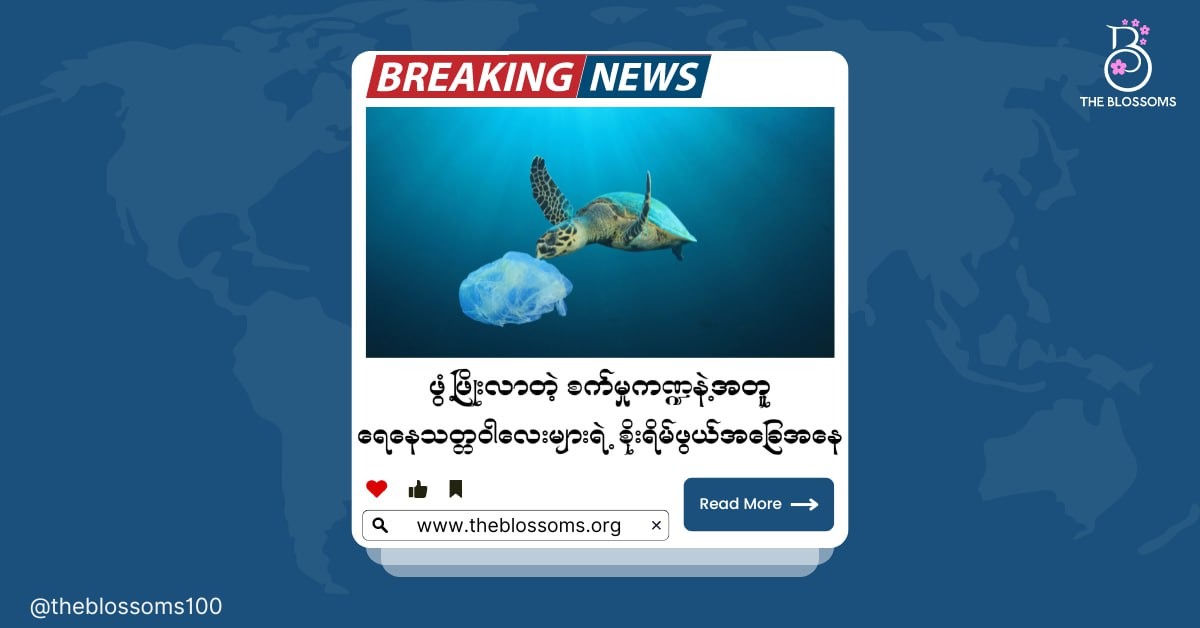1. အပူလှိုင်းများအကြောင်း စူးစမ်းလေ့လာခြင်း
ကျွန်မတို့နေထိုင်တဲ့ ကမ္ဘာကြီးက တစ်နေ့ထက်တစ်နေ့ ပိုမိုပူပြင်းလာပြီးတော့ လူတိုင်းပြင်းထန်တဲ့အပူဒဏ်ကို ခံစားနေကြရပါတယ်။ အခုလို အပူချိန်တွေလွန်ကဲလာပြီး ပူအိုက်လှတဲ့ရာသီဥတုတွေဟာ အပူလှိုင်းဖြတ်တာကြောင့်ဖြစ်တယ်လို့ မိုးလေဝသလေ့လာသူတွေရဲ့ ပြောပြချက်တွေအရသိရပါတယ်။ဒီနေ့ရဲ့အကြောင်းအရာလေးမှာတော့ အပူလှိုင်းဆိုတာဘာလဲ၊အပူလှိုင်းတွေဟာ ဘယ်လိုဖြစ်လာရတာလဲဆိုတာကိုပြောပြပေးသွားမှာဖြစ်တဲ့အပြင် အပူလှိုင်းဆိုတာ ဘာကြောင့်ဖြစ်တာလဲ၊အပူလှိုင်းတွေက ဘယ်လိုအကျိုးသက်ရောက်မှုမျိုးကို ဖြစ်စေနိုင်သလဲ၊အပူလှိုင်းကို ဘယ်လိုကာကွယ်နိုင်မလဲ? စတဲ့ ကဏ္ဍလေး(၃)ခုနဲ့ပတ်သတ်ပြီး Sharing လုပ်ပေးသွားဦးမှာဖြစ်ပါတယ်။ဒါဆို အခုဘဲအတူတူဖတ်ကြည့်လိုက်ကြရအောင်နော်။
အပူလှိုင်းဆိုတာ ဘာလဲ?
အပူလှိုင်းဆိုတာက အချိန်အတိုင်းအတာတစ်ခုအထိကြာမြင့်တဲ့၊ ပုံမှန်အပူချိန်ထက် ပိုပူတဲ့ ဖြစ်စဉ်တစ်ခုဘဲဖြစ်ပါတယ်။
အပူလှိုင်းဆိုတာ ဘယ်လိုဖြစ်လာတာလဲ?
အပူလှိုင်းဆိုတာ ပူနွေးတဲ့လေတွေကို အောက်ကိုကျစေပြီးတော့ မြေပြင်အနီးအနားမှာ ကပ်ငြိနေအောင်လုပ်တဲ့ high pressureတွေ လေထုထဲမှာရှိနေတဲ့အခါ အဲhigh pressureတွေကပူနွေးတဲ့လေတွေကို အပေါ်ကိုပြန်တက်မလာအောင် တားဆီးထားပါတယ်။အဲအချိန်မှာပူနွေးတဲ့လေတွေက မိုးအဖြစ်လည်း မပြောင်းနိုင်ဘဲ တဖြည်းဖြည်း ပူလာပြီးတော့ အပူလှိုင်းတွေကို ဖြစ်ပေါ်စေတာဖြစ်ပါတယ်။
အပူလှိုင်းကို အပူနှုန်းပေါ်မူတည်ပြီး 3မျိုးခွဲခြားနိင်ပါတယ်။
1.low-intensity
2.severe
3.extreme
low-intensityဆိုတာကတော့ မကြာခဏဖြစ်လေ့ရှိတဲ့ အပူလှိင်းမျိုးဖြစ်ပြီး severe နဲ့ extremeကတော့ ကိုင်တွယ်ဖြေရှင်းဖိုခက်တဲ့ အပူလှိုင်းတွေဖြစ်ပါတယ်။
Exploring Heat Waves
The world we live in is getting hotter day by day and everyone is suffering from severe heatstroke. According to meteorologists, the extreme temperatures and hot weather are due to heat waves. In today's topic, we will talk about what heat waves are, how heat waves occur, why heat waves occur, what effects heat waves can cause, and how to prevent heat waves. We will be sharing in these (3) sections Exploring Heat Wavess. So let's read it together.
What is a heat wave?
A heat wave is a process that is hotter than normal temperature and lasts for a certain amount of time.
How did the heat wave happen?
A heat wave is a movement of warm air down and stuck near the ground when there is high pressure in the atmosphere, preventing the warm air from rising back up and forming rain.
Heat waves can be divided into 3 types based on the heat rate. They are:
1. Low-Intensity
2. Severe and
3. Extreme Low-Intesnity.
Low-intensity is the most common type of heat wave, while Severe and Extreme heat waves are hard to deal with.
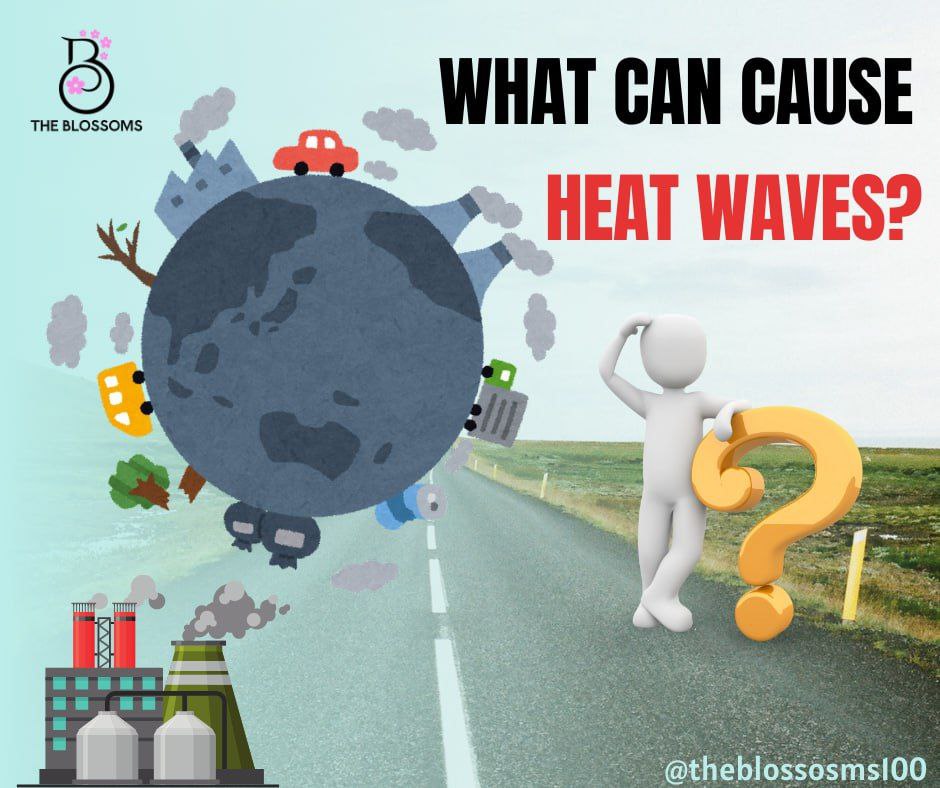 2.အပူလှိုင်းဆိုတာ ဘာကြောင့်ဖြစ်တာလဲ?
2.အပူလှိုင်းဆိုတာ ဘာကြောင့်ဖြစ်တာလဲ?
- လူတွေရဲ့လုပ်ဆောင်ချက်တွေ၊ယာဥ်တွေ၊စက်ရုံတွေကထွက်တဲ့ gasတွေ၊အပူတွေကြောင့် လေထုထဲမှာ Greenhouse gas တွေပါဝင်မှုမြင့်မားလာပြီးတော့ လေထုပူနွေးမှုကိုဖြစ်စေပြီး အပူလှိင်းများကို ဖြစ်ပေါ်စေပါတယ်။
-Urban heat island effect
မြိုပြဒေသတွေရဲ့ အပူချိန်ဟာ ကျေးလက်ဒေသတွေရဲ့ အပူချိန်ထက် ပိုများပါတယ်။ကျေးလက်ဒေသတွေမှာရှိတဲ့ မြေကြီး၊မြက်ခင်းပြင်တွေက ကျရောက်လာတဲ့ အပူတွေကိုစုပ်ယူနိုင်တဲ့အတွက် ကျေးလက်ဒေသတွေမှာ အပူချိန်နည်းပါတယ်။မြိုပြတွေမှာ အဆောက်အဦး၊car parking၊ကွန်ကရစ်လမ်း၊နိုင်လွန်ကတ္တရာစတဲ့အရာတွေနဲ့ ပြည့်နှက်နေပြီး အပူတွေကိုစုပ်ယူနိုင်တဲ့ မြေကြီး၊မြက်ခင်းတွေ မရှိတာကြောင့် ကျရောက်လာတဲ့ အပူတွေက ပတ်ဝန်းကျင်မှာကျန်ရှိနေပြီး လေထုအပူချိန်ကို ပိုတိုးစေပါတယ်။ဒီဖြစ်စဉ်ကို urban heat island effect လိုခေါ်ပါတယ်။
-မိုးခေါင်ခြင်းကြောင့် မြေကြီးထဲမှာစိုစွတ်မှု နည်းလာပြီး ရေငွေ့ပျံမှုနှုန်းကိုလျော့ကျစေပါတယ်။အကျိုးဆက်အနေနဲ့ လေထုအပူချိန်ကို လျင်မြန်စွာမြင့်တက်စေပြီးတော့ အပူလှိင်းတွေကိုဖြစ်ပေါ်စေပါတယ်။
-အချိုသောအပူလှိင်းတွေက El Nino နဲ့ La Ninoလိုခေါ်တဲ့ ရာသီဥတုပုံစံတွေကြောင့်လည်း ဖြစ်စေနိုင်ပါတယ်။El Nino ဆိုတာကတော့ Pacific Ocean အရှေ့ပိုင်းနဲ့ အလယ်ပိုင်းရဲ့ အပူပိုင်းဒေသတွေမှာရှိတဲ့ ပင်လယ်ပြင်မျက်နှာပြင်အပေါ်ပုံမှန်အပူချိန်(သိုမဟုတ်)ပင်လယ်ပြင်မျက်နှာပြင်ပူနွေးမှုဖြစ်ပြီး၊ la Ninoကတော့ South Americaရဲ့ အနောက်ကမ်းရိုးတန်းဒေသတစ်လျှောက်မှာရှိတဲ့ ပင်လယ်ရေမျက်နှာပြင်ရဲ့ အအေးနှုန်းကိုဖော်ပြတဲ့ ရာသီဥတု ပုံစံတစ်မျိုးဖြစ်ပါတယ်။ဒီ El Ninoနဲ့ La Nino ကြောင့်လည်း ပိုပြီးအချိန်ကြာမြင့်တဲ့၊ပိုပူပြင်းတဲ့ အပူလှိင်းတွေကို ဖြစ်ပေါ်စေပါတယ်။
-သစ်တောများပြုန်းတီးခြင်း၊ မြေကြီးများကို ကွန်ကရစ်များနှင့် ဖုံးလွှမ်းခြင်းတိုကြောင့် ရာသီဥတုအခြေအနေတွေကို ပြောင်းလဲစေပြီး အပူလှိင်းများကို ဖြစ်ပေါ်စေပါတယ်။
Why do Heat Waves happen?
- Due to human activities, vehicles, and the gases and heat emitted into the atmosphere by factories, the concentration of greenhouse gases in the atmosphere increases, causing the atmosphere to warm and causing heat waves.
-Urban heat island effect
Generally, the temperature of urban areas is higher than the temperature of rural areas. Because the land and grass in rural areas can absorb the heat, the temperature is lower in rural areas. Urban areas are cramped by things like buildings, car parking, concrete roads, and nylon asphalt, and because there is no land or grass to absorb the heat, the heat remains and is stuck in the environment, increasing the air temperature. This phenomenon is called the "Urban Heat Island Effect."
-Because of the drought, the moisture in the soil decreases, and the evaporation rate declines. As a result, the air temperature rises rapidly and generates heat waves.
-Some heat waves can also be caused by weather patterns called El Nino and La Nino. El Nino refers to a normal temperature on the surface of the sea in the tropical regions of the eastern and central Pacific Ocean. La Nino refers to a weather pattern that describes the cooling of the sea surface along the west coast of South America. These El Nino and La Nino also create longer and hotter heat waves.
- Deforestation, along with covering the earth with concrete also changes weather conditions and forms heat waves.
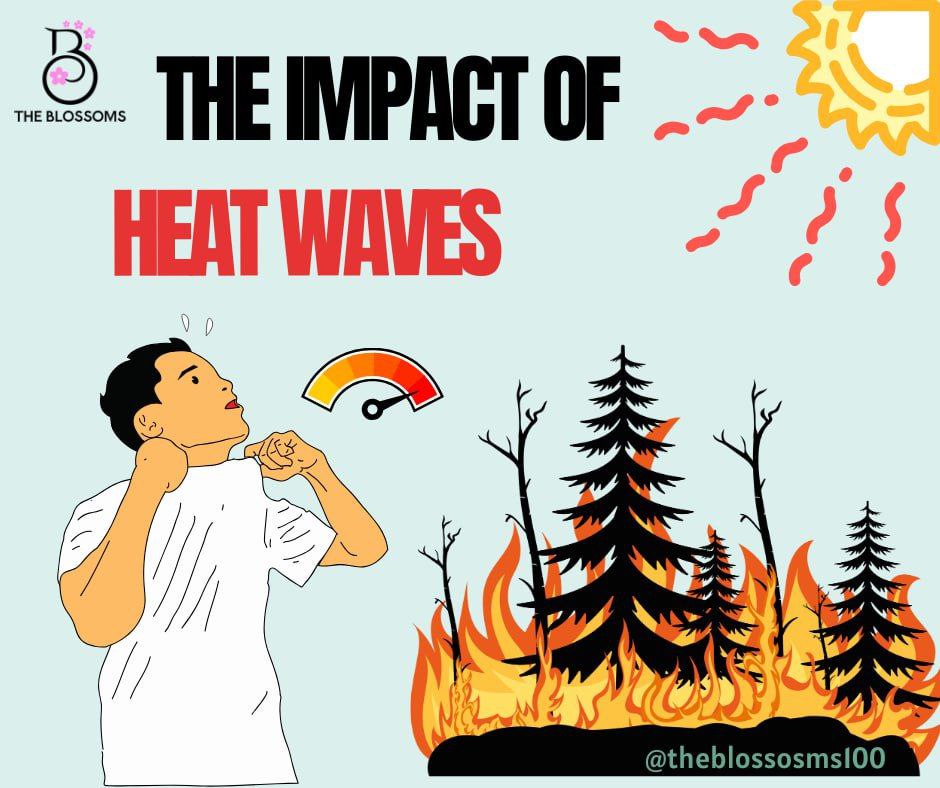 3.အပူလှိုင်းတွေက ဘယ်လိုအကျိုးသက်ရောက်မှုမျိုးကို ဖြစ်စေနိုင်သလဲ?
3.အပူလှိုင်းတွေက ဘယ်လိုအကျိုးသက်ရောက်မှုမျိုးကို ဖြစ်စေနိုင်သလဲ?
-Human health:အပူလှိင်းတွေကြောင့် ချွေးထွက်များပြီး ရေဓာတ်ခန်းခြောက်ခြင်း၊မောပန်းနွမ်းနယ်ခြင်း၊ခြေကုန်လက်ပန်းကျခြင်း၊အပူလျှပ်ခြင်း၊သတိလစ်ခြင်း၊အရေပြားရောဂါများ၊အသက်ရှူခြင်းနှင့်ဆိုင်သောရောဂါများ၊နှလုံးသွေးကြောနှင့်ဆိုင်သော ရောဂါများဖြစ်စေနိုင်ပြီး ကိုယ်ဝန်ဆောင်မိခင်များ၊ကလေးငယ်များ၊သက်ကြီးရွယ်အိုများ၊နာတာရှည်ရောဂါရှိသူများ၊ရောဂါအခံရှိသူများအတွက် ပိုပြင်းထန်နိုင်ပြီး အသက်သေဆုံးတဲ့အထိဖြစ်စေနိုင်ပါတယ်။ဒါ့အပြင် ဆောက်လုပ်ရေးသမားများ၊စိုက်ပျိုးရေးလုပ်ငန်းလုပ်သူများ၊လမ်းလုပ်သမားများက များသောအားဖြင့် နေပူထဲမှာ အလုပ်လုပ်ရတာဖြစ်တဲ့အတွက် ပိုပြီး သတိထားသင့်ပါတယ်၊၊Physical illness သာမက စိတ်ပူပန်ခြင်း၊စိတ်အလိုမကျဖြစ်ခြင်း၊စိတ်ကစဥ့်ကလျားဖြစ်ခြင်း၊စိတ်ဖောက်ပြန်မှု စတဲ့ mental illnessတွေကိုလည်းဖြစ်စေနိုင်ပါတယ်။
_Mortality:အပူလှိင်းများကြောင့် အပူချိန်ပြင်းထန်တဲ့ဒေသတွေ၊လူဦးရေထူထပ်တဲ့နေရာတွေ၊အေးမြမှုပေးနိုင်တဲ့ အထောက်အပံ့ပစ္စည်းတွေ မရရှိနိုင်တဲ့ဒေသတွေမှာ အပူဒဏ်ကြောင့်သေဆုံးမှုနှုန်းမြင့်တက်စေနိုင်ပါတယ်။
-infrastructure damage:အပူချိန်မြင့်မားမှုကြောင့် လမ်း၊မီးရထားလမ်းများ ပြိုလဲပျက်စီးမှု၊မီးကြိုးများထိခိုက်ပျက်စီးစေပြီး ပိုဆောင်ဆက်သွယ်မှု၊လျှပ်စစ်မီးရရှိမှုများကို အနှောက်အယှက်ဖြစ်စေနိုင်ပါတယ်။
_Economic consequences:အပူဒဏ်ကြောင့်ဆောက်လုပ်ရေး၊ခရီးသွားလာမှု၊စိုက်ပျိုးရေးစတဲ့ လုပ်ငန်းတွေကို နှောင့်နှေးစေပါတယ်။အဲဒိအပြင် ကောက်ပဲသီးနှံများ အထွက်နှုန်းလျော့ကျမှု၊အပင်များညှိးနွမ်းပျက်စီးမှု၊သေကြေမှု၊ခြံမွေးတိရစ္ဆာန်များ ဆုံးရှုးရမှု၊နိုရရှိမှု ကျဆင်းမှုနှင့် ကြီးထွားခြင်းနှေးကွေးမှု၊အပူဒဏ်ကာကွယ်ရန် energyများအသုံးပြုရခြင်းကြောင့် စီးပွားရေးကို သိသာစွာထိခိုက်စေရုံသာမက ဈေးနှုန်းများမြင့်တက်စေပြီး အစာရေစာလုံလောက်မှုကိုလည်း ထိခိုက်စေနိုင်ပါတယ်။
-Wildfires:ပြင်းထန်တဲ့အပူချိန်တွေကြောင့် သစ်ရွက်တွေ၊သစ်ပင်တွေခြောက်သွေ့မှုကိုဖြစ်စေပြီးတော့ မီးလောင်လွယ်တဲ့ လောင်စာတွေဖြစ်လာပြီး တောမီးလောင်မှုများကို ဖြစ်ပေါ်စေပါတယ်။တောမီးလောင်မှုတွေက သဘာ၀ပတ်၀န်းကျင်၊အိမ်၊အဆောက်အဦးတွေအပါအ၀င် လူသားတွေရဲ့ ကျန်းမားရေးကိုလည်း ပြင်းထန်စွာ ထိခိုက်စေနိုင်ပါတယ်။
-Water resources:အပူလှိင်းတွေက ရေကန်၊မြစ်၊ရေလှောင်ကန်တွေရဲ့ အငွေ့ပျံမှုနှုန်းကို မြင့်တက်စေပြီး ရေရှားပါးမှုကို ပိုပြီးဆိုးရွားစေတဲ့အတွက် စိုက်ပျိုးရေး၊စက်ရုံ၊အိမ်ထောင်စုတွေအတွက်လိုအပ်တဲ့ရေပမာဏကိုလျော့ကျစေပါတယ်။ပြီးတော့ မိုးခေါင်ခြင်းကြောင့်လည်း ရေရရှိမှုကို အနှောက်အယှက်ဖြစ်စေပါတယ်။
-Ecosystems:အပူလှိင်းတွေဟာ သဘာ၀ပတ်၀န်းကျင်ကို ပျက်စီးစေတဲ့အပြင် သက်ရှိမျိုးစိတ်လေးများပြန့်ပွားမှုကို ဟန့်တားစေပြီး သဘာ၀ကိုကောင်းမွန်အောင်ထိန်းညှိပေးတဲ့၊လူသားတွေအတွက်များစွာအရေးပါတဲ့ Biodiversity ကိုလည်းလျော့ကျစေပါတယ်။အကျိုးဆက်အနေနဲ့ သတ္တ၀ါမျိုးစိတ်များသေဆုံးခြင်း၊သန္တာကျောက်တန်းများထိခိုက်ခြင်း၊အပင်များ ပျက်စီးခြင်းတိုကို ဖြစ်စေပါတယ်။
What kind of effects can heat waves lead to?
-Human Health: Heat waves can cause excessive sweating and dehydration, fatigue, weakness in limbs, heat stroke, unconsciousness, skin diseases, respiratory diseases, and cardiovascular diseases.
Pregnant women, children, the elderly, people with chronic diseases, and those with chronic diseases can be more serious and may even die. In addition, construction workers, agricultural workers, and road workers should be more careful since they usually work in the sun. It can bring not only physical illness, but also mental illness such as anxiety, frustration, depression, and mental illness.
-Mortality: Because of the heat waves, the death rate due to heatstroke may increase in areas with severe temperatures, densely populated areas, and areas where cooling facilities are not available.
-Infrastructure damage: Due to high temperatures, roads and railways may collapse and damage, power lines may be damaged, and transportation and electricity supply may be disturbed.
-Economic consequences: Heatstroke delays construction, traveling, agriculture, etc. In addition to this, crop yields decrease, plants withered and damaged, death, loss of farm animals, decrease in milk supply, and slow growth in the economy.
-Wildfires: As a result of extreme temperatures, leaves and trees become dry and become flammable fuels, causing forest fires.
Water resources: Heat waves enhance
-the rate of evaporation of lakes, rivers, and water reservoirs and makes water scarcity worse, thus reducing the amount of water needed for agriculture, factories, and households. Drought also disturbs water availability.
-Ecosystems: Heat waves not only damage the natural environment but also prevent the spread of small living species and reduce Biodiversity, which regulates nature and is very important for humans. As a result, it leads to the death of animal species, coral reef damage, and plant damage.
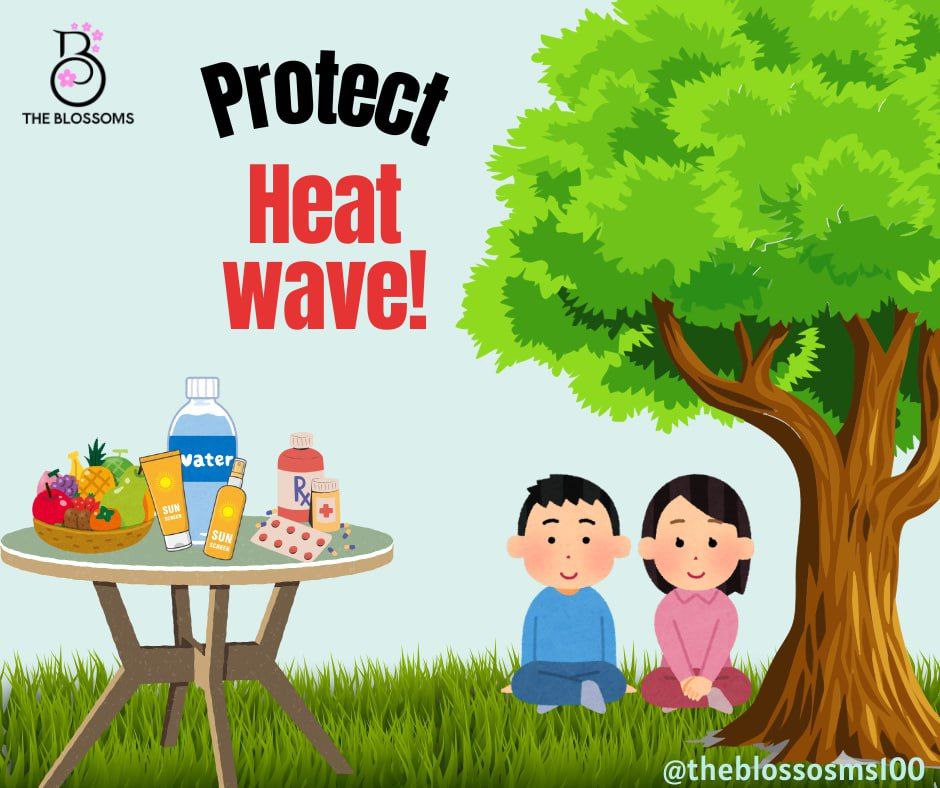 4.အပူလှိင်းကို ဘယ်လိုကာကွယ်နိုင်မလဲ?
4.အပူလှိင်းကို ဘယ်လိုကာကွယ်နိုင်မလဲ?
အပူလှိင်းကို ကာကွယ်နိုင်ဖိုအတွက် လုပ်ဆောင်နိုင်တဲ့နည်းလမ်းက အဓိကအားဖြင့်နည်းလမ်း နှစ်မျိုးရှိပါတယ်။
1.အပူလှိင်းဖြတ်စဉ်အတွင်း ကာကွယ်ရန်နည်းလမ်းများ
-အပူလှိင်းရဲ့ဆိုးကျိုးတွေကို သေသေချာချာသိအောင် သတိပေးချက်တွေကို ဂရုတစိုက်မှတ်သားထားသင့်ပါတယ်။
-ပူအိုက်တဲ့ရာသီဥတုအတွင်းမှာ လိုက်နာနေထိုင်သင့်တဲ့နည်းလမ်းတွေကိုလည်း သေသေချာချာသိထားသင့်ပါတယ်။
-အရေးပေါ်အခြေအနေတွေမှာ အဆင်သင့်ပြုစုကုသနိုင်အောင် ဆေး၀ါးပစ္စည်းတွေ၊ဓာတ်ဆားထုတ်တွေကိုလည်းစုဆောင်းထားပြီး ကျန်းမာရေးနည်းလမ်းတွေကိုလည်း တတ်မြောက်အောင်လေ့လာထားသင့်ပါတယ်။အနီးဆုံးကျန်းမာရေးဌာနများကိုဆက်သွယ်နိုင်မဲ့ ဖုန်းနံပါတ်နှင့် အချက်အလက်တွေကိုလည်း မှတ်သားထားသင့်ပါတယ်။
-လေပန်ကာနဲ့လေအေးပေးစက်တွေကို အသုံးပြုခြင်းထက် ယပ်တောင်ကိုအသုံးပြုခြင်းက Global warmingကိုလျှော့ချပြီးသားဖြစ်စေပါတယ်။သဘာ၀ကရရှိတဲ့လေကအကောင်းဆုံးဖြစ်လို လေ၀င်လေထွက်ကောင်းတဲ့နေရာတွေမှာနေသင့်ပါတယ်။
-ကလေးများ၊သက်ကြီးရွယ်အိုများ၊ရောဂါအခံရှိသူများက အပူဒဏ်ကို ခုခံနိုင်အားနည်းပါးတဲ့အတွက် ပုံမှန်လူတွေက ဂရုတစိုက်နဲ့ စောင့်ကြည့်ပေးဖိုလိုအပ်ပါတယ်။
-အိမ် ထဲမှာနေတဲ့အခါနေ့ဘက်မှာ အပူတွေမ၀င်နိုင်အောင် ခန်းဆီး၊လိုက်ကာတွေကိုပိတ်ထားသင့်ပြီး ညဘက်မှာ အေးနေအောင် ပြတင်းပေါက်၊တံခါးတွေကို ဖွင့်ထားသင့်ပါတယ်။
-အပူချိန်ပြင်းတဲ့အချိန်များ(နံနက်၁၀ နာရီမှ ညနေ ၄နာရီအတွင်း)မှာ အပြင်ထွက်ခြင်းကို လုံး၀ရှောင်ကြဉ်သင့်ပါတယ်။အရိပ်ရတဲ့နေရာတွေမှာနေသင့်ပါတယ်။အရေးကြီးတဲ့ ကိစ္စမဟုတ်ခဲ့ရင် တတ်နိုင်သမျှအိမ်ထဲမှာနေတာ အကောင်းဆုံးဖြစ်ပါတယ်။မသွားမဖြစ်တဲ့ကိစ္စတွေကြောင့် အပြင်သွားရမယ်ဆိုရင် နေရောင်ခြည်နဲ့တိုက်ရိုက်မထိတွေ့စေဖို ဦးထုပ်၊ထီး တိုကို အသုံးပြုသင့်ပါတယ်။UVပါတဲ့ suncreenများလိမ်းသင့်ပါတယ်။
-နေပူထဲကပြန်လာတာနဲ့ ချက်ချင်းရေချိုးခြင်း၊ရေသောက်ခြင်း၊အလွန်အေးတဲ့အခန်း သိုမဟုတ် ကားထဲကို၀င်ရောက်ခြင်းကို ရှောင်ကြဉ်သင့်ပါတယ်။
-အ၀တ်အစား၀တ်ဆင်တဲ့အခါ ထူထဲတဲ့အ၀တ်အစားတွေ၊တင်းကျပ်နေတဲ့ အ၀တ်အစားတွေထက် ပေါ့ပါးလွတ်လပ်ပြီးချွေးစုပ်ယူနိုင်တဲ့ ချည်သားအင်္ကျီ၊စပန့်အင်္ကျီတွေကို ၀တ်ဆင်သင့်ပါတယ်။
-ရေဆာသည်ဖြစ်စေ၊ရေမဆာသည်ဖြစ်စေ ရေကိုလုံလောက်အောင် သောက်ပေးသင့်ပါတယ်။ဒါပေမဲ့ ရေခဲရေထက် ရိုးရိုးရေကိုသာ သောက်ပေးသင့်ပါတယ်။
-သစ်သီးတွေထဲမှာဆိုရင် အရည်ရွမ်းတဲ့ သစ်သီးတွေဖြစ်တဲ့ တလည်းသီး၊သံပုရာသီး၊မုန်လာဥအဖြူ၊ဘူးသီး၊ဖရုံ၊သခွား၊ဖရဲသီး၊သခွားမွှေး၊လိမ္မော်၊စပျစ်၊နာနတ်၊ဂရိတ်ဖရု၊ဘယ်ရီသီး၊မုန်လာဥနီ၊ဟင်းရွက်သုပ်၊အစိမ်းရောင်ငရုပ်ပွ၊ပူစီနံရွက်(ပူတီနာ)တိုကိုပိုစားပေးသင့်ပါတယ်။ဖျော်ရည်တွေအနေနဲ့ ကိုကိုး၊မန်ကျည်း၊အုန်းစိမ်းရည်၊ခရမ်းချည်သီးဖျော်ရည်များနှင့် လက်ဖက်ရည်ကြမ်းများကိုသောက်ပေးသင့်ပါတယ်။
-အစားအစာတွေထဲမှာတော့ ခန္ဓာကိုယ်အတွင်းအပူချိန်ကိုမြင့်မားစေတတ်တဲ့ ချင်း၊ငရုတ်ကောင်းမှုန့်၊ငရုတ်သီးအမျိုးမျိုး၊ချောကလက်၊ဆိုဒါ၊ဆီကြော်မုန့်၊အရက်၊ချိစ့်၊ကော်ဖီတိုကို ရှောင်သင့်ပါတယ်။
How can we protect heat waves?
There are two major ways that we can do to protect heat waves.
Prepare for heat waves
-Stay informed about heat wave notifications and their impacts.
-Learn how to stay safe during hot weather conditions.
-Keep essential supplies like medication and oral rehydration salts (ORS) handy for emergencies.
-Know the contact information for nearby healthcare providers and emergency services.
-Opt for traditional fans over electric fans and air conditioners as they are more environmentally friendly.
-Seek out locations with good natural ventilation for better airflow.
-Ensure the care of vulnerable individuals such as children, the elderly, and those with health conditions during heat waves.
-Close curtains during the hottest times of the day (from 10 am to 4 pm) and stay in the shade whenever possible.
Wear sunscreen, and hats, and use umbrellas for protection when outdoors.
-Stay hydrated by drinking water regularly and taking showers or find cool shelter after being outside.
-Choose lightweight, breathable clothing made of cotton to help manage sweating.
-Consume watery fruits and vegetables like lime, watermelon, cucumber, and grape to stay hydrated.
-Opt for juices like tamarind or tomato, and hydrating beverages like coconut water and green tea.
-Avoid foods that can raise body temperature such as ginger, chili peppers, chocolate, alcohol, and coffee.
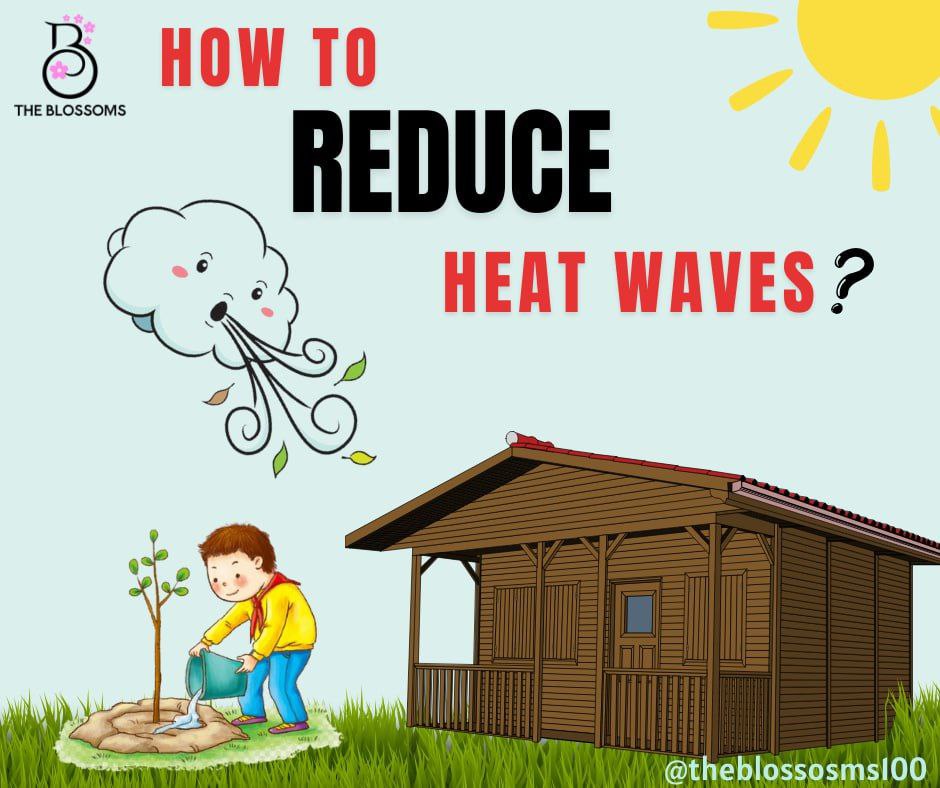 5.အပူလှိင်းများမဖြစ်အောင် လုပ်ဆောင်နိုင်သောနည်းလမ်းများ
5.အပူလှိင်းများမဖြစ်အောင် လုပ်ဆောင်နိုင်သောနည်းလမ်းများ
-သဘာ၀ပတ်၀န်းကျင်ကို ထိန်းသိမ်းစောင့်ရှောက်ခြင်း- လေထုထဲမှာ greenhouse gasများပါ၀င်ပျံ့နှံမှုကိုလျှော့ချခြင်း၊သဘာ၀ပတ်၀န်းကျင်ကို ထိခိုက်မှုနည်းသော(စိုက်ပျိုးရေး၊ရေထိန်းသိမ်းမှု၊လူထုကျန်းမာရေး ကိုထည့်သွင်းစဉ်းစားသော)စွမ်းအင်များပြောင်းလဲသုံးစွဲမှု၊စွမ်းအင်တွေကို အကျိုးရှိရှိအသုံးချမှုနှင့်သဘာ၀ပတ်၀န်းကျင်ထိန်းသိမ်းမှုကို မြှင့်တင်ပေးခြင်းတွေက ကမ္ဘာကြီးပူနွေးလာမှုကိုလျှော့ချနိုင်ပြီး အပူလှိင်းများ၏rateကိုလည်း ကျဆင်းစေပါတယ်။
-မြိုပေါ်ဒေသများအတွက် အစီအစဥ်များရေးဆွဲခြင်း-မြိုပေါ်ဒေသတွေမှာ မြက်ခင်းကျယ်တွေ၊မြေပြင်တွေကို သဘာ၀အတိုင်းထားရှိခြင်း၊အပင်များစိုက်ပျိုးခြင်း၊အေးမြမှုပေးနိုင်တဲ့ ခေါင်မိုးနှင့်အခင်းတွေ တပ်ဆင် အသုံးပြုခြင်းက မြိုပြဒေသတွေရဲ့ အပူချိန်ကိုလျှော့ချပေးပြီး အပူလှိင်းတွေရဲ့ဒဏ်ကိုသက်သာစေပါတယ်။
-အဆောက်အဦးပုံစံများ ပြင်ဆင်ခြင်း-အပူဒဏ်ကာကွယ်နိုင်တဲ့ပစ္စည်းတွေအသုံးပြုခြင်း၊သဘာ၀အတိုင်းလေ၀င်လေထွက်ကောင်းအောင်ထားရှိခြင်းနှင့် အရိပ်ရရှိခြင်းက အိမ်တွင်းအပူချိန်ကိုလျော့ကျစေပြီး အပူဒဏ်သက်သာဖို လျှပ်စစ်ပစ္စည်းတွေအသုံးပြုရမှုကို လျှော့ချပြီးသားဖြစ်စေပါတယ်။
-Researchများပြုလုပ်ခြင်း-အပူလှိင်းနဲ့ဆက်စပ်တဲ့ လေ့လာဆန်းစစ်မှုတွေကို ထိထိရောက်ရောက်လုပ်ဆောင်တာက အပူလှိင်းတွေဖြစ်ပေါ်ရခြင်းအကြောင်းရင်း၊ကာကွယ်တားဆီးနိုင်တဲ့ နည်းလမ်းတွေ၊ကြိုတင်ပြင်ဆင်နိုင်မဲ့ နည်းစနစ်တွေကိုတီထွင်ကြံဆနိုင်တဲ့အတွက် အပူလှိင်းတွေကို ထိထိရောက်ရောက်ကာကွယ်လျှော့ချနိုင်မှာဖြစ်ပါတယ်။
-ဒီအပူလှိင်းတွေကိုသာ သေသေချာချာဂရုစိုက်ပြီးဖြေရှင်းနိုင်မဲ့နည်းလမ်းတွေကို မလုပ်ဆောင်ဘူးဆိုရင် ဒီအပူလှိင်းတွေဟာ long-termအနေနဲ့ ဖြစ်သွားနိုင်ခြေရှိတယ်လိုခန့်မှန်းထားကြပါတယ်။အကယ်၍ long-termသာဖြစ်သွားမယ်ဆိုရင် သဘာ၀ပတ်၀န်းကျင်အတွက်ရော လူသားတွေအတွက်ပါ ထိခိုက်မှုတွေ ရှိလာနိုင်မှာဖြစ်ပါတယ်။
Source:Unicef,Climatetrade,Geographical.co.uk/science,WHO,Treehugger,moi.gov.mm,IFRC
Ways to reduce heat waves
-Mitigating climate change: Reducing greenhouse gas emissions through policies and actions aimed at transitioning to renewable energy sources, increasing energy efficiency, and promoting sustainable land use practices can help mitigate the warming of the planet and reduce the frequency and intensity of heat waves.
-Urban planning and design: Implementing urban heat island mitigation strategies such as increasing green spaces, planting trees, installing cool roofs and pavements, and promoting reflective building materials can help lower urban temperatures and mitigate the effects of heat waves in cities.
-Improving building design: Enhancing the energy efficiency of buildings through measures such as improved insulation, natural ventilation, and shading can help reduce indoor temperatures and the need for mechanical cooling during heat waves.
-Research to understand the causes of heat waves and develop strategies for prevention and mitigation.
-Implement early intervention methods to reduce the impact of heat waves on communities and ecosystems.
Recognize the long-term dangers posed by persistent heat waves if left unaddressed, both to the environment and human health.
Sources:Unicef,Climatetrade,Geographical.co.uk/science,WHO,Treehugger.moi.gov.mm,IFRC
 THE
THE 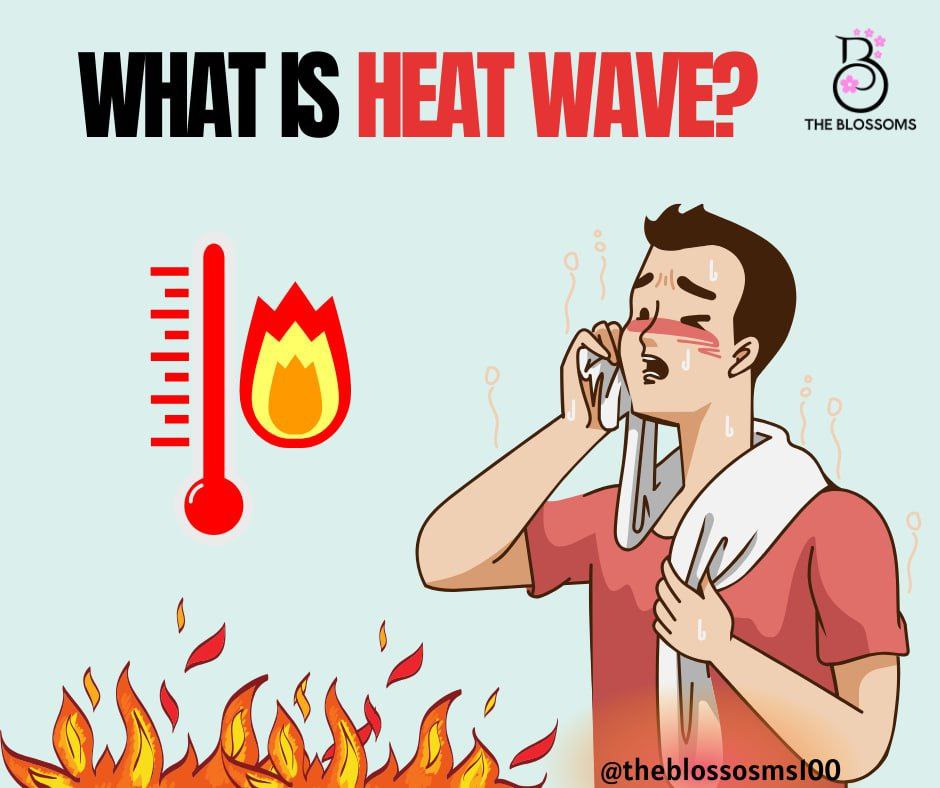

-v1.jpg)
